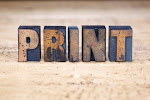skip to main |
skip to sidebar
This video conference is actually a few months old but it is still relevant today. It contains good info about the differences between previous marketing methods and the relevance of establishing good relationships with consumers today.
Brand = Response vs. stimulus; something that happens in the minds and hearts of the people and the conversations that take place as a direct result of those people's experience with the brand.

I used to work in the HR department for a local organic grocery chain. It was really the first job where I was linked to a retail experience—and my first experience with customer service. From day one, it was my responsibility to teach our new employees the value of connecting with our customers. As a result of providing stellar service that went above and beyond, our company thrived with repeat customers and folks who shouted our praises to their friends.
What a valuable lesson! Thereafter, whenever I came across poor service, I always thought back to my experience there and thought twice about revisiting an establishment that didn't measure up.
In my role as Production Manager at MORRIS, one of my greatest responsibilities—and one of the things I enjoy most about my job— is establishing and maintaining relationships with our vendors. YOU CAN BET that the vendors that go above and beyond for our company—who work with us to solve problems, provide samples, work on budgets, and show a GENUINE interest in us—are the ones who are receiving the calls on a regular basis.
Web sites like Facebook, twitter, myspace, tribe, friendster, and LinkedIn have revolutionized the business world, making connecting with our networks and cohorts easy. A wide variety of resources are suddenly, readily available to us and relationships have taken on completely new meaning.
Everywhere you look these days, people are touting the significance of genuinely connecting with others and the importance of developing authentic relationships as a smart business practice. As someone who agrees, this perspective is a breath of fresh air.
Getting back to what matters, the PEOPLE, matters to me.
My time is limited this week.
I will be at a conference on Thursday—where I am excited to learn more about the state of social media and interactive marketing.
And Friday, I'm taking the day off to go camping sans my little one. Looking forward to some time off (of work and mommy duty) in the great outdoors!
Since I don't have much time to write, I have a book/resource recommendation for everyone who touches design or production in this industry. It's a resource that, quite literally, I couldn't live without.
It contains the following tidbits:
- Measurement Conversion Charts
- Copyright and Trademark Standards
- Proofreading and Copywriting Symbols
- Imaging and Color Info
- Typography
- Paper Details
- Bindings and Folds
- Envelopes and Folder Sizes
- Packaging Die Lines
- Info on Postal Standards
- Bar Code Standards
- Printing and Finishing Info
I have found if I need to quickly reference something, it typically has the answer I seek. Check it out!

"Forms Folds Sizes—All the Details Graphic Designers Need to Know but Can Never Find" by Poppy Evans
http://www.amazon.com/Forms-Folds-Sizes-Details-Designers/dp/1592530540/ref=sr_1_2?ie=UTF8&s=books&qid=1245178951&sr=8-2
This morning a good friend of mine, who owns a bath and body company, called me for advice regarding an issue with the production of the labels for her products. When she first approached her vendor for an estimate, she provided physical samples of her product (other labels, printed by a different vendor) that were the exact size and material she wanted quoted. Her labels have a rounded corner, which the vendor failed to notice was a different size than the die (shaping tool/machinery) they use. Today, in the midst of proofing her labels, her vendor told her the die size they use for rounded corners (.125”) is the “industry standard“ and if she wants to maintain the size on the rounded corners she submitted, she’ll have to pay an additional $400 to have a new die created. What? Ugh. She already paid a designer to adjust the size of the corners and now, she ‘s stuck in a tough spot. Is it the vendor’s fault for not noticing and not mentioning the difference to her during the estimating process? Is there anything she could have done to prevent this? CONSIDER THIS… when estimating projects that require die cuts (or rounded corners). An ounce of prevention is worth a pound of cure in these situations. The following suggestions also help to keep the costs down: Ask your vendor if they handle die cutting and conversion in-house or if they outsource it. If they handle it in-house: 1) Request a full-sized, digital die line file from your vendor.2) Measure it.3) Transfer the die line to your design file and use as your guide for design.4) Print it.5) Create a mock up.6) Test it. If they are outsourcing the die cutting or conversion:1) Ask them to double check their vendor’s current library of dies and ask them to send you the most recent version of that die line. 2) Then, follow steps 1-6 above.We ran into a similar issue with our envelopes during the Murphy’s Law project. Our print vendor provided us with the last die he was given by their envelope converter. When we went to print the envelope, the converter had updated their dies. The new file was slightly different than the file we received. Ultimately, we had to adjust the design to fit the new die. A luxury we had but one my friend does not. Something as simple as the size of a rounded corner, or the angle of an envelope flap, can have a big impact on the final outcome of the image. For every element and every design decision that’s made, pay close attention, ask questions of your vendor, and go into every job filled with as much knowledge as possible. Hopefully, by doing so, you can avoid extra costs and the pitfalls of missed details.
Another detail in the endless realm of design details...
I'm putting out a miniature fire today.
Recently the post office created new address placement requirements for flat sized mail pieces (i.e magazines and mailers). I don't recommend dealing with these issues when your project is about to be plated but... hey, looks like we're in luck today!
So... to spare you the embarrassment and cost (!) make sure to bookmark this blog or check out the new requirements for flat sized mail pieces -
http://www.usps.com/mailpro/2008/mayjune/page8.htm.
as well as information on design requirements in general -
http://pe.usps.com/mpdesign/mpdfr_intro_all.asp
If you have further, in depth questions about designing items to be mailed, search and find your very own Mailpiece Design Analyst here: http://pe.usps.com/mpdesign/mpdfr_mda_lookup.asp (pretty cool).
For those of you in San Diego...
Paula Bigornia - Mailpiece Design Analyst
United States Postal Service
11251 RANCHO CARMEL DR RM 145
SAN DIEGO CA 92199-9602
Phone Number: 858-674-0392
Fax Number: 858-674-0055
Email Address: paula.m.bigornia@usps.com
Happy designing!





